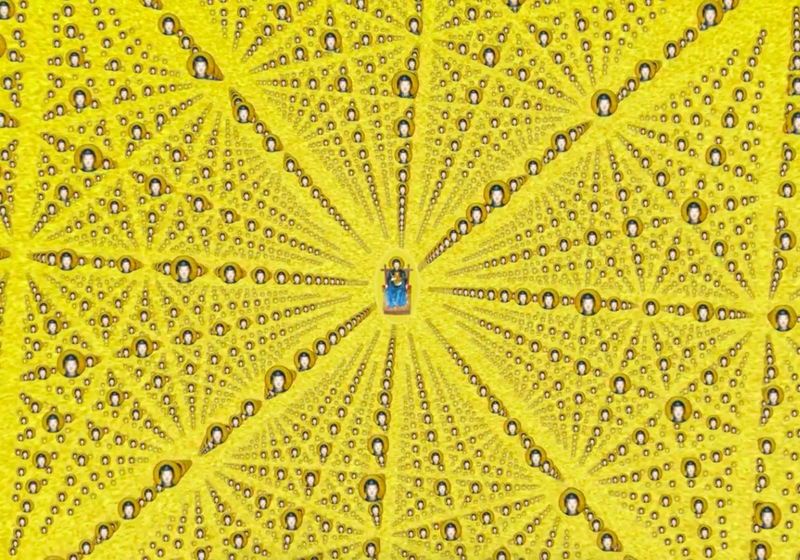The way the world is mapped has always been defined by numerous factors: something as simple as the vantage point of the cartographer could influence the outlines of a territory. In the 17–18th centuries, the Qatari peninsula mysteriously disappeared from European maps. Dr. James Onley, the Director of Historical Research at the Qatar National Library, explores why and how this could have happened.
The Qatari peninsula appears on Europeans maps up to the late 16th century but, for some unexplained reason, it is omitted from later maps from the 17th and 18th centuries, before reappearing on those from the early 19th century.
Two explanations for the disappearance of the Qatari peninsula from European maps seem possible: either the European cartographers did not know it was there, or the peninsula was submerged underwater for nearly two centuries. Here I argue the case for the former.
The most probable explanation for why the Qatari peninsula is missing from European maps is that these maps were based on second-hand accounts provided by Gulf nakhudas (skippers). The most famous map of the Gulf from the 17th-18th centuries is Carsten Niebuhr’s copper engraved map from 1765, which was reprinted in Étienne-André Philippe de Prétot’s Atlas universel pour l’étude de la géographie et de l’histoire ancienne et modern (Paris: Nyon l’aîné, 1787). Niebuhr explains in his Reisebeschreibung nach Arabien und andern umliegender Ländern [Account of travels to Arabia and other surrounding lands] (Copenhagen: Nicolaus Möller, 1787) that he based his map on interviews with nakhudas at Muscat and Bushehr in 1765. He never visited Qatar.
If we look at Niebuhr’s map, we see that the waters off the Qatari coast are shaded grey, indicating shallow depth or coral reefs—areas inaccessible to deep-hulled European ships. This is why early European cartographers like Niebuhr had no choice but to rely on second-hand information from Gulf nakhudas. The appearance of the Qatari peninsula on some pre-17th century European or Ottoman maps is possibly the result of the cartographers’ use of local dhowsdhowsThe generic name of a number of traditional sailing vessels with one or more masts used in the Red Sea and Indian Ocean region. to chart the coast.
The European cartographic dependency on Gulf nakhudas in the 17th and 18th centuries had at least two consequences. The first is the fact that the place names are not accurate: both the names and their locations. In Niebuhr’s case, he identifies five towns along the Qatari coast, from west to east:
Gattar (probably Bida’ / Bidda, now a suburb of Doha)
Adsjär (possibly al-Khor, possibly ‘Uqair from the Hasa coast)
Huäle (Huwaila)
Iusofie (Ras Yusufiyya, near Ruwaida)
Faräha (Furaiha / Freiha, 3km north ZubaraZubaraThese place-name corrections are from Robert Carter, Sea of Pearls: Seven Thousand Years of the Industry That Shaped the Gulf (London: Arabian Publishing, 2012), p. 116, reproduced in “Historical References to Doha and Bidda before 1850”. )
One must therefore adjust for Niebuhr’s misspellings and his mistake of plotting the towns in reverse order, swapping Bida’ for Furaiha, and so on.
The second consequence of using Gulf nakhudas was the unintentional adoption of the nakhudas’ perception of geography, which likely differed from that of their European counterparts. Thus, while Qatar’s coastal villages and towns are clearly listed on Niebuhr’s map, the Qatari peninsula itself is shown as a straight coastline. This difference of perception is also evident in pre-20th century Arab, Persian, and Indian maps of the southwest coast of the Arabian peninsula: the southwest corner of the peninsula separating the Gulf of Aden from the Red Sea (Bab al-Mandeb, which turns almost ninety degrees) is represented as a straight uninterrupted flow on these maps. This naturally seems wrong to us in the present (and would have been confusing to European cartographers too) only because we are trained to draw and read maps in a particular way. To an Arab, Persian, or Indian nakhuda sailing between Aden and Jeddah, the straight uninterrupted coastline hiding Bab al-Mandeb’s ninety degree angle would have been perfectly logical, since the map represents how the coast appears if you were actually on the deck of a dhow. The same would have been the case with the Qatari peninsula. Thus, when Gulf nakhudas described the Qatari coast to European cartographers like Niebuhr, the contours of the coast would have been literally “lost in translation.”
This is the most plausible explanation for the curious case of “Qatar’s disappearance” from European maps. If the Qatari peninsula had been submerged during Niebuhr’s visit to the Gulf, he would not have listed Bida’ (now Doha), Huwaila, Yusufiyya, and Furaiha (near Zubara) on his map, for these sites would have been underwater too, long abandoned and forgotten.






